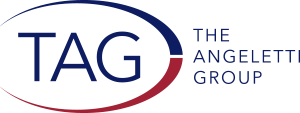Why Your Board Must Get On Board with Fundraising
We all know that a board’s role includes fiduciary and legal oversight. And that can be said of the boards of both non-profit and for-profit organizations. But there are major differences. One major difference is that money travels in different directions. In for profits, board members get paid for the value and contacts they bring. In non-profits, board members also bring value and contacts; however, instead of paying their board members, non-profits ask their boards to make significant philanthropic gifts, too.
The best boards and board members know this, celebrate it – and relentlessly promote a culture of relationship-building and philanthropy. They recognize this work is as important as the organization’s mission! Still other boards and board members don’t understand this – or choose not to orient themselves in this direction – and they will never realize their full potential.
While some boards and board members believe they cannot raise significant philanthropic support because they are “grass roots” or “too young” or myriad other reasons, it’s just not true. My colleagues and I are blessed to work with many non-profits – large and small, newer and established – and we see under-performers and high-performers. It’s all about the rigor and genuine commitment with which they approach their development work. For the successful ones it’s not transactional fundraising; it’s true development work. And the successful organizations produce short term return on investment and long-term security.
Development work may look like a series of meandering lunches; in fact, though, it’s genuine relationship building – respectful, serious, substantive, and business-like. And there is no short cut. A few facts and tips:
- Recognize that the average time frame to identify, cultivate, solicit, and receive a major gift commitment is 72 weeks.
- Identify and work with a portfolio of prospective donors throughout every stage of the philanthropic cycle to ensure that you always have prospects ready to be asked – today and 72 weeks from today.
- Continually introduce new prospects to your organization.
- Reinforce a thoughtful, disciplined approach to fundraising.
- Meet one-on-one with prospects. There is no better way to build relationships. And pick up the phone to schedule meetings. Email is extraordinary, but not the only form of communication.
Many people unfamiliar with philanthropy ask me if it’s difficult to ask someone for a big gift. For the most part, they wonder how anyone could give away so much money. I tell them our country was built on a culture of philanthropy. Colleges and universities, independent schools, hospitals, museums, zoos, churches, social service and human rights organizations, and much more! I tell them the challenging part about fundraising isn’t asking people for money. By the time you get to the “ask” you already have researched, introduced, educated, and cultivated. After all that, if your organization is changing lives, gifts – and big ones – will follow!


